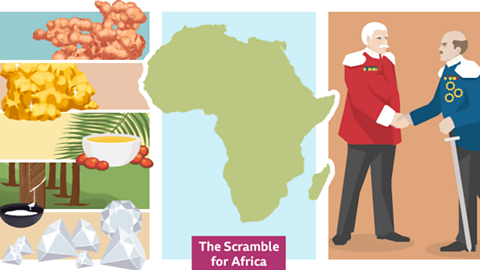Key points
- The British Empire began in the late 1500s under Queen Elizabeth I.
- By 1913 the empire had grown to rule over 400 million people, making it the largest empire in history.
- British government and society benefitted economically from the empire.
- The people colonised by the British had British laws and customs imposed upon them, lost their ability to govern themselves and were, in many cases, violently oppressed.
Video about life in the British Empire
Narrator: By 1913, the British had built an empire which ruled over 400 million people and covered a quarter of the Earthãs surface. The empire brought Britain wealth, power and influence. However, for the people that were colonised, it brought violence, disease and famine. 1838 was the second year of Queen Victoriaãs reign. Looking at this single year, we can get a sense of the different experiences of life in the British Empire.
In Jamaica, the abolition of slavery in 1833 had not actually freed enslaved people. They were forced to work as unpaid apprentices for their former masters. The British rulers were concerned that those formerly enslaved could now vote in elections and threaten their power. In 1838, the British governors of Jamaica made plans to introduce a law that ensured only property owners could vote.
This allowed British control to continue and prevented most Black people from voting. The 1830s had seen a push for colonial emigration to Australia. The Aboriginal people were met with violence and new diseases brought by the settlers. In 1838, British settlers began to forcibly take lands from the Aboriginal peoples and there were several massacres, in which a large number of people were killed over the following years.
Since the 17th century, the British-owned East India Company had controlled large parts of India. In 1838 there was terrible drought in Agra, which meant many crops and cattle died causing a famine. The East India Company and the British rulers did little to help with the relief and by the end of the year, 800,000 people had died from starvation.
British Empire overview activity
Learn more about some of the key events in the history of the British Empire with this activity.
The origins of the British Empire
The British Empire had its origins in the late 1500s.
In 1585, Queen Elizabeth I gave Walter Raleigh permission to set up a colonyA country, state or territory ruled over by another country, state or territory. on Roanoke Island, now part of the modern-day USA. The settlers had lost most of their supplies on the journey and struggled to find food when theirs ran out. They were at first reliant on local indigenous peopleThe people who originate in a particular area, rather than those who migrated there. for food, but there was a lack of trust between the two groups and the relationship descended into violence.
All of the settlersã attempts to set up a colony on Roanoke Island failed and they eventually abandoned the land in 1590. The first successful colony was set up in 1607 in Jamestown, which is now part of the state of Virginia in the USA.
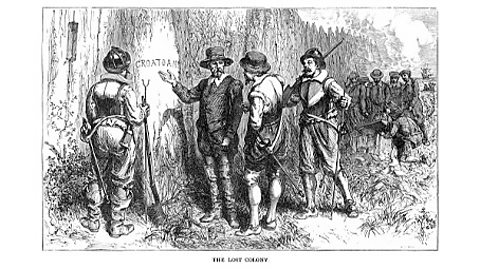
Why did Britain build an empire?
Britain decided to build an empire for several reasons. These included:
- To gain more money
- To gain more power
- To spread Christianity and British ways of life
Spain built its empire in the 1500s. It controlled 80 per cent of the worldãs silver because it conquered several colonies in Latin America, such as Peru and Mexico. England wanted the money and power that the Spanish had, but this would require a lot of violence and force.
The indigenous people in the new colonies were presented to the British public as ãuncivilisedã, because their way of living was different from that of people in Europe. This meant people began to believe that the British should continue to grow their empire to bring ãcivilisationã to these places, even by force. There were also missionariesPeople who travel to spread their religion to new people. who believed it was their duty to travel to new countries and convert people to Christianity.

The development of the British Empire
The empire existed for nearly 400 years in total. It spread from the Americas to include colonies in Africa, Asia and Australasia. During this time Britain lost and gained colonies.
During the early years of the British Empire, 13 colonies in North America were established by the British. These colonies went to war against Britain in 1775 to achieve their freedom, declaring themselves independent on 4 July 1776. Britain formally recognised the United States of America as an independent country in 1783.
After losing the 13 colonies Britain did not want its empire to shrink again, and decided to make it even bigger.
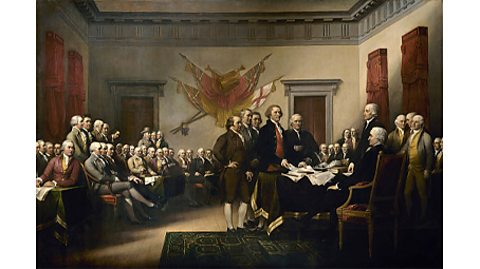
The expansion of the British Empire in India
From 1757 onwards, the British East India Company began to establish control over much of India. The money the British made by exploitTo make use of or handle a situation in a way that is considered unfair. local rulers and workers funded the continuing progress of the Industrial Revolution. In 1858, India became an official colony of the British Empire. It was considered the ãjewel in the crownã of the British Empire.
Why was India referred to as the ãjewel in the crownã of the British Empire?
Ruling India was economically very beneficial for Britain, because the British authorities exploited Indiaãs resources and population.
India had a population of around 300 million people, which meant the British could export and trade goods to this huge market. India also produced goods Britain could sell at home and worldwide for a huge profit.
India also had a strong army, which Britain was able to use. The Indian Army fought alongside British troops in several conflicts. Indian soldiers fought in the Second Boer War in South Africa from 1899 - 1902, and in both world wars.
The expansion of the British Empire in Africa
In the 1880s the ãScramble for Africaã took place and Britain came to control 30 per cent of the African population, with several African kingdomsThere have been many African kingdoms throughout history, including the Mali Empire and the Kingdom of Benin. Many of them traded in gold with Arab nations, and were often richer than European kingdoms in the medieval period. destroyed in the process. For example, when the British colonised the Kingdom of Benin, they exileTo force someone to leave their own country, often for political reasons as a punishment. the kingdomãs leaders, lootTo steal someone else's property, usually during a war or riot. Benin treasures, burned much of Benin city to the ground and killed many people.
What are the Benin Bronzes?
The Benin Bronzes are elaborate sculptures made from metals like bronze and brass, as well as ivory. Following the invasion of Benin, many of the Benin Bronzes were stolen by British soldiers and sailors.
Today, the Benin Bronzes can be viewed in museums all over the world. However, many people have campaigned for the return of these cultural treasures to their country of origin, which is modern-day Nigeria. As of 2022, museums and institutions in Britain, the USA and Germany have agreed to return some of the bronzes to Nigeria.
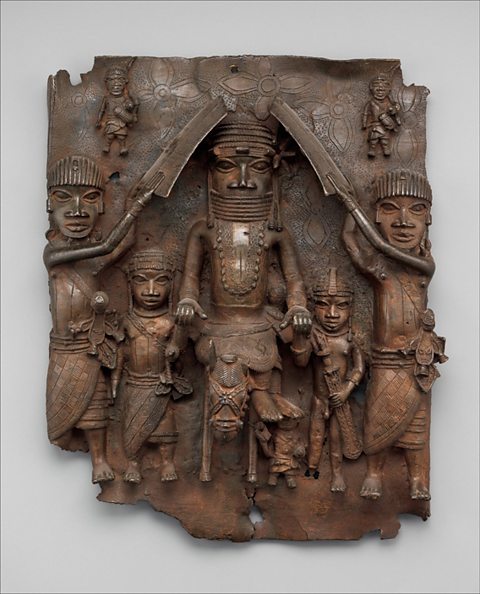
As the empire grew, Britain became more powerful. It was then more difficult for a country to fight against colonisation.
Life in the British Empire
For people living in the colonies, British rule often meant that their traditional languages, religions and ways of living were replaced with the English language, Christianity and British systems of government and education. English remains the official language of many ex-colonies to this day. The number of speakers of some indigenous languages, like that of theýîáÍÇú¯ªƒÝThe indigenous, meaning native to a country prior to its colonisation, people of New Zealand. in New Zealand, has declined dramatically.
The colonies were generally run by British government officials who lived in the colony and not by the indigenous people. British laws were brought to colonies that often did not take into account cultural differences between the people of the colonies and the British. Taxes on colonised people were often high and the British exploited natural resources for their own financial gain.
In the 1700s and 1800s, India experienced several devastating famines. These famines were partly caused by the weather, and the region had suffered from famine before British rule, but British policies often made the situation worse. Under British rule, Indians were pushed to produce crops, such as tea, that Britain could sell for high prices. Therefore when poor weather affected the harvests, there were food shortages resulting in famines across India. During many of these famines Britain did not organise a large enough relief effort, and millions died across India.
Punishments for uprisings and protest were harsh. They could include executing people and even firing openly onto crowds of civilians, for example during the Amritsar Massacre.
What was the Amritsar Massacre?
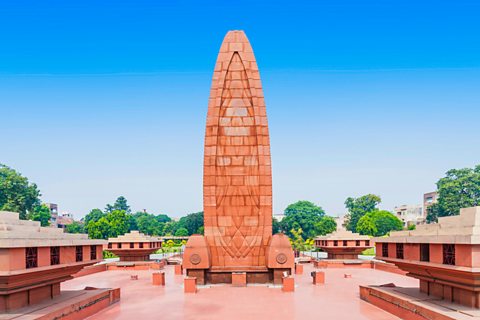
On 13 April 1919, over 10,000 men, women and children gathered in an enclosed park, the Jallianwala Bagh, in Amritsar. It had only one accessible exit. Orders had been given that banned large meetings of people, but not everyone had been made aware of this. Some of the people who had gathered were protesting against British rule. Many others had gathered to celebrate a Sikh festival. Without warning, the British general Dyer had his troops block the only exit and fire openly on the unarmed crowd.
It was initially estimated that over 350 people were killed and over a thousand more injured. However some historians now suggest that the death toll may be higher. Reports of the massacre spread across the world. This helped to gain a lot of support for the Indian independence movement.
Life in Britain during the Empire
For some people living in Britain, the British Empire meant that they were able to migrate to different colonies and take positions of authority or obtain land. For those who could not afford to leave and stayed in Britain, there were many more jobs available in factories because merchants were bringing back valuable items, such as cotton, to make into products that would be sold across the empire.
Technological developments during the empire
From the 1750s onwards, there were huge developments in technology in Britain. New machinery and railway technology meant that goods could be produced and transported much faster. This reduced the amount of physical labour needed to produce goods and made more money for those in charge.
This technology was introduced in British India, which reduced the time it would take to transport large amounts of goods from inlandThe part of a country that is not situated on the coast. India to the ports, and then to transport goods such as cotton and tea to Britain.
After introducing this in India, Britain introduced this same technology in other colonies. This technology was left in the colonies after they became independent.
Opposition to the British Empire
While there was a lot of support in Britain for the empire at the time, there was always some opposition to it. Some people argued that colonies had their own cultures and traditions before the arrival of the British, and that it was wrong to force a different way of life or religion on people.
There was opposition to the transatlantic slave trade in Britain during the 1700s and 1800s. This came from members of parliament, like William Wilberforce, as well as religious organisations, such as the QuakersMembers of a Christian movement known as the Religious Society of Friends, which was founded in the 17th century. They believe strongly in peace and the importance of human rights.. Olaudah Equiano, a formerly-enslaved man who settled in London, campaigned against slavery and published an autobiography detailing his experiences of enslavement.
The opposition to empire became stronger when Britain went to war to protect its new power, as this often led to the deaths of indigenous people and British soldiers. For example, there was public opposition to the Second Boer War, as well as political opposition from the Liberal PartyA British political party that was founded in the mid-1800s. Members of the party believed in the importance of human rights and were often opposed to the British Empire getting bigger during the 1800s..
What were the key events in the abolition of the transatlantic slave trade?
The end of empire
Many historians believe that the end of the British empire started when the countries with large white populations of European descent were given dominion statusWhen a country is still part of the British Empire, but is allowed to rule itself.. The first was Canada in 1867, then Australia became a dominion in 1901 and South Africa became a dominion in 1910.
In terms of size, the British Empire was at its largest in the years following World War One, when it gained some of Germanyãs former colonies. This was because Germany had lost World War One, and its former colonies were given to other European countries through the Treaty of Versailles.
In 1926 the CommonwealthThe Commonwealth was set up in 1926 between Britain and all partly independent countries in the empire, which were also known as dominion states. Eventually other territories within the empire became part of the Commonwealth. was set up between Britain and all of its dominion states. This was an agreement that all of the dominion statusWhen a country is still part of the British Empire, but is allowed to rule itself. in the Commonwealth were considered equal.
In the mid-1900s, Britainãs situation changed completely. By the end of World War Two in 1945 it became clear that:
- Britain could no longer afford to maintain its empire
- British attitudes were changing, as more people began to believe that having an empire was wrong and that Britain had no right to rule over other states by force
- Independence movements were growing in many different colonies. This included the Quit India campaign, led by Mohandas Gandhi
- Countries like the USA and the Soviet Union, who had been Britainãs allies during World War Two, supported decolonisation
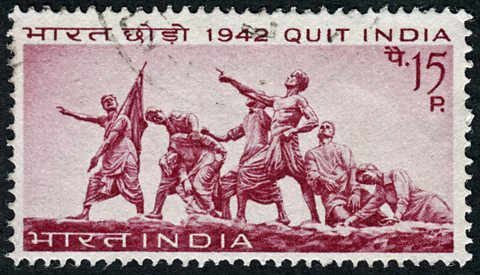
Then, in 1947, following years of campaigning, British India was partitioned into two independent nations, India and Pakistan. This followed many years of protesting and fighting.
This inspired several other countries across Asia, Africa, the Caribbean and elsewhere to push for their own freedom.
One of the first African countries to become independent from Britain following World War Two was Ghana, in 1957. One of the last countries to gain full independence from Britain was Belize, in Central America, in 1981.

Some of these independent countries still have a relationship with Britain to this day through the Commonwealth. Today, there are only 14 territories that have strong enough constitutional links to the UK to be considered overseas territoryA territory that has strong constitutional and historical ties to Britain, but is usually self-governing and does not form a part of the United Kingdom itself..
Activity - Put the events in order
Test your knowledge
Play the History Detectives game! gamePlay the History Detectives game!
Analyse and evaluate evidence to uncover some of historyãs burning questions in this game.

More on The British Empire
Find out more by working through a topic
- count2 of 4
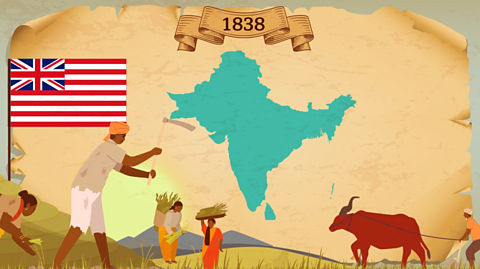
- count3 of 4
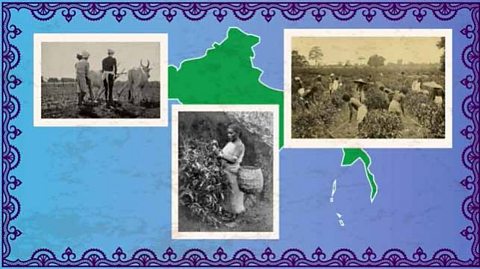
- count4 of 4
